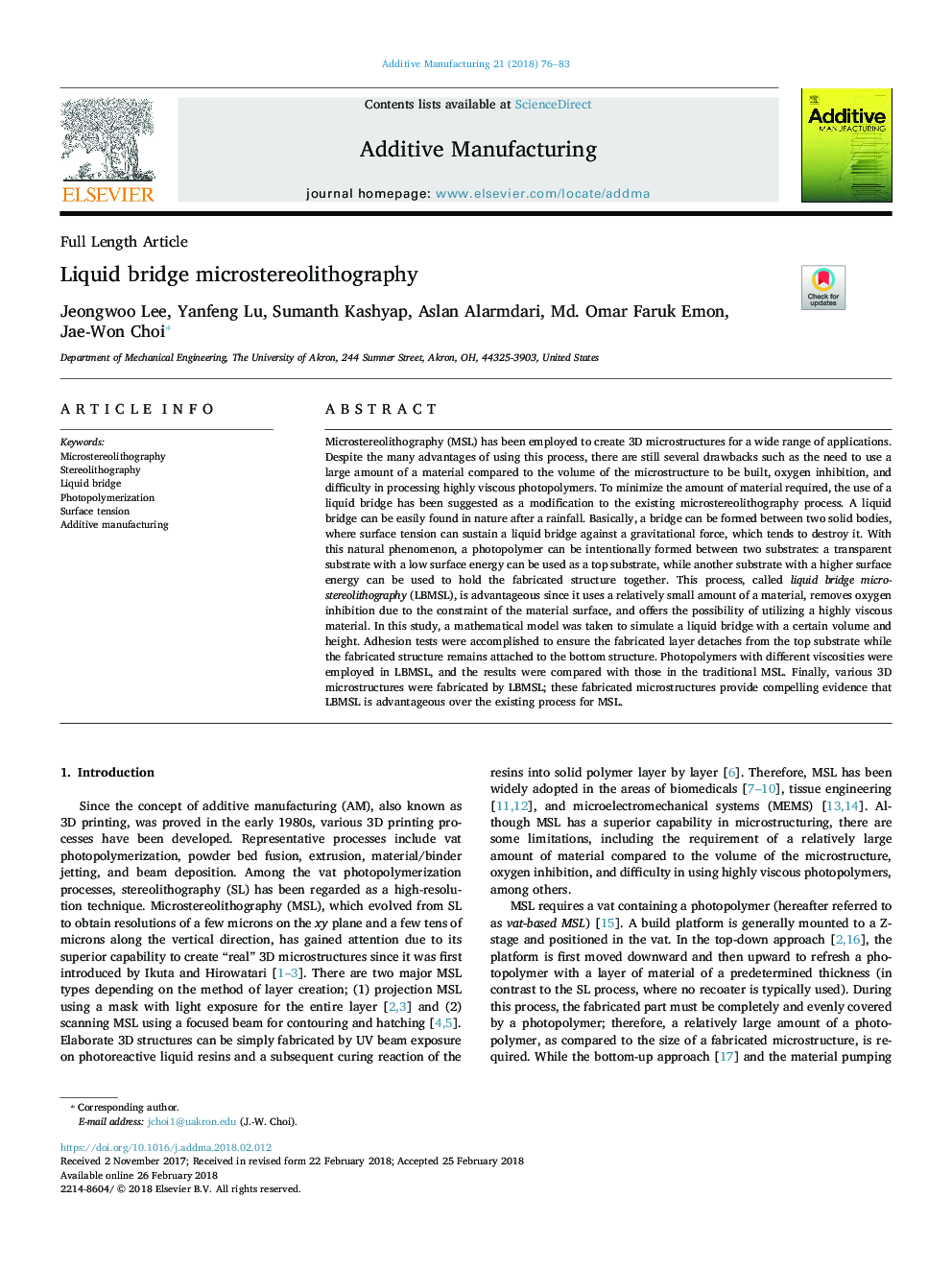| کد مقاله | کد نشریه | سال انتشار | مقاله انگلیسی | نسخه تمام متن |
|---|---|---|---|---|
| 7205851 | 1468628 | 2018 | 8 صفحه PDF | دانلود رایگان |
عنوان انگلیسی مقاله ISI
Liquid bridge microstereolithography
ترجمه فارسی عنوان
میکروسسترولیتوگرافی پل مایع
دانلود مقاله + سفارش ترجمه
دانلود مقاله ISI انگلیسی
رایگان برای ایرانیان
کلمات کلیدی
میکروسترئولیتوگرافی، استریولیتوگرافی، پل مایع، عکسبرداری، کشش سطحی، تولید افزودنی،
موضوعات مرتبط
مهندسی و علوم پایه
سایر رشته های مهندسی
مهندسی صنعتی و تولید
چکیده انگلیسی
Microstereolithography (MSL) has been employed to create 3D microstructures for a wide range of applications. Despite the many advantages of using this process, there are still several drawbacks such as the need to use a large amount of a material compared to the volume of the microstructure to be built, oxygen inhibition, and difficulty in processing highly viscous photopolymers. To minimize the amount of material required, the use of a liquid bridge has been suggested as a modification to the existing microstereolithography process. A liquid bridge can be easily found in nature after a rainfall. Basically, a bridge can be formed between two solid bodies, where surface tension can sustain a liquid bridge against a gravitational force, which tends to destroy it. With this natural phenomenon, a photopolymer can be intentionally formed between two substrates: a transparent substrate with a low surface energy can be used as a top substrate, while another substrate with a higher surface energy can be used to hold the fabricated structure together. This process, called liquid bridge microstereolithography (LBMSL), is advantageous since it uses a relatively small amount of a material, removes oxygen inhibition due to the constraint of the material surface, and offers the possibility of utilizing a highly viscous material. In this study, a mathematical model was taken to simulate a liquid bridge with a certain volume and height. Adhesion tests were accomplished to ensure the fabricated layer detaches from the top substrate while the fabricated structure remains attached to the bottom structure. Photopolymers with different viscosities were employed in LBMSL, and the results were compared with those in the traditional MSL. Finally, various 3D microstructures were fabricated by LBMSL; these fabricated microstructures provide compelling evidence that LBMSL is advantageous over the existing process for MSL.
ناشر
Database: Elsevier - ScienceDirect (ساینس دایرکت)
Journal: Additive Manufacturing - Volume 21, May 2018, Pages 76-83
Journal: Additive Manufacturing - Volume 21, May 2018, Pages 76-83
نویسندگان
Jeongwoo Lee, Yanfeng Lu, Sumanth Kashyap, Aslan Alarmdari, Md. Omar Faruk Emon, Jae-Won Choi,
